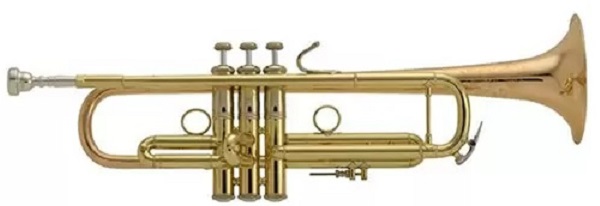Dec 22, 2025
Dec 22, 2025
One of the many misconceptions I had in my youth (I still have a pretty big bundle) was that the Trumpet was nothing more than a fairer looking elder brother of the Bugle, that instrument the uniformed men used to make shrill, high pitched sounds at parade grounds, so unrelated to music that pleased the heart and soothed the mind.

I realized how wrong I was about Trumpet when I heard, for the first time, a brilliant performance by 22- year old Wynton Marsalis at the 1983 Grammy Award ceremony that was televised live world-wide. A performance that has remained close to my heart ever since and introduced me to such great Classical masters as Haydn and Hummel, Bach and Mozart, and several more.
Their Trumpet ‘Concertos’ (traditionally a three- movement composition with a fast paced first and last movements and a slow middle movement) explored the unlimited possibilities in the range and versatility of an instrument that has never been accorded the high status enjoyed by many other instruments in the music world, like the violin or the piano.
What Marsalis played at the Grammy function was a Haydn Concerto which, like another famous Concerto by Hummel, is a lilting piece of music for the Trumpet and perhaps one of the most popular among performers and audiences alike the world over.
Marsalis in fact won a double Grammy that year, one for Classical Trumpet and one for Jazz. He repeated the feat the following year also. He is now celebrated as one of the greatest Jazz trumpeters in the world, with an impressive nine Grammys in tow, but Jazz music is something that I have all along been keeping aloof from or, to use a current expression, keeping away at safe, social distancing. In music I respect him as a great, virtuoso Classical Trumpeter.
0ne of the reasons for the lack of more votaries among the great composers of the distant past in the Baroque, Classical and Romantic periods of western music (Beethoven, Brahms or Mahler never wrote a Trumpet Concerto), could be in the making of the instrument itself. The Trumpet of those times was not valvular which meant that there was more difficulty in making tonal changes. Variations in tone and pitch could be made only with the pouting of lips of the performer. This difficulty was overcome with the development of the keyed Trumpet and later valvular Trumpet.
A rudimentary keyed Trumpet was believed to have been developed by Haydn’s friend Anton Weidinger to whom Haydn dedicated his famous ‘Concerto for Trumpet in E Flat major.’
The technique involved drilling holes in the Trumpet pipe and having keys to close them or open them up, enabling the performer to make tonal variations. Weidinger’s method, however, was not found very suitable and the old type instrument, known then as natural Trumpet, continued to be used. Present day Trumpets have three or four valves for voice control, either piston driven or rotary.
The earliest composition for the Trumpet was the Brandenburg Concerto No2, part of a set of six instrumentals that J S Bach presented in honour of the Marquis of Brandenburg in 1721. Vivaldi and Telemann were among the other composers of the times who wrote for Trumpet.
During the Classical era that followed there appeared to be a revival of interest in the Trumpet. Among the many who wrote Concertos for Trumpet were Joseph Haydn, his brother Michael Haydn, Mozart, his father Leopold Mozart and Johann Nepomuk Hummel. Unfortunately, Mozart’s Trumpet Concerto had been lost irretrievably.
Hummel was a child prodigy, who was highly regarded by Mozart. Hummel remained in Mozart’s home for some years learning music till he was about ten.
Of all the compositions for Trumpet produced in this era, the two outstanding works that received world-wide popularity were undoubtedly by Haydn and Hummel, named Trumpet Concerto in E Major and Trumpet Concerto in E Flat major respectively.
Many names stand out as virtuoso performers of Trumpet in the present age. They include Maurice Andre of France,who died in 2012, Haken Hardenberger of Sweden,Tine Thing Helseth of Norway and Alison Balsom of Britain. Helseth leads a ten-member all-female ensemble named tenThing (thing in old Norse means assembly or group). Alison Balsom is an internationally renowned player, teacher and promoter of Trumpet. She has brought out a string of records and CDs on Trumpet and has performed with Philharmonic Symphonies in different parts of the world.
I personally find the Trumpet recitals by Balsom and Helseth always a wonderfully uplifting experience. Whether it is Haydn or Hummel, distilled Baroque or capricious modern, they are sure to captivate the audience all through the recital, with an unmatched felicity of expression and marked virtuosity. They always seem to be in perfect control of the instrument and the beautiful sound emanating from it.
13-Jun-2020
More by : P. Ravindran Nayar